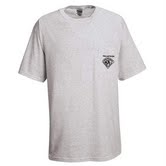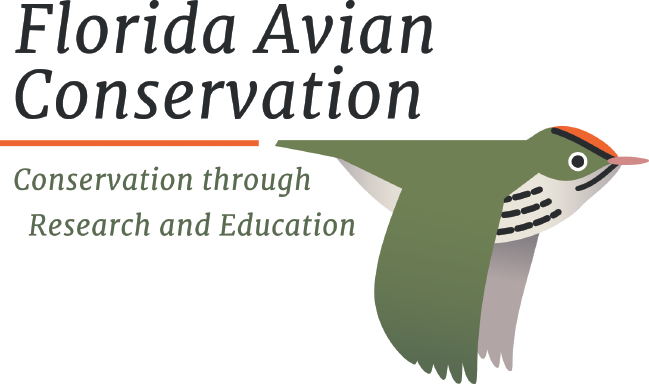Conservation Projects
A project in cooperation with St Pete Audubon and Audubon of Florida Eagle Watch.
Description and physical requirements: This project has been under way for many years. Over the last
ten,
the bald eagle has soared off the endangered species list. While the eagles are doing very well as of
December 2010, careful observations subsequent to their delisting are critical. The rate of habitat
loss may rival the rate of adaptation. Participation requires driving within the county, monitoring and
reporting on bald eagles and their territories.
Participants must have at least one but not all of the following equipment; spotting scope, digital
camera, or binoculars. GPS and laser measuring devices can be helpful as well. Scouting begins in
August and monitoring begins on October 1st each year. The season is officially complete on May 15th
however late nests may require monitoring throughout the entire year. Several optional team surveys take
place annually depending upon annual goals. We are monitoring a record number of bald eagle nests
throughout the entire county.
Volunteer opportunities exist for Audubon members, local citizens, educators, college students,
Girl Scouts, and Boy Scouts. Volunteer positions include: field monitors, photographers, citizen watchers, presenters, speakers, organizers and
advocates.
Contact Barbara Walker
or call 727-798-2385 to volunteer with The Raptors at Moccasin
Lake Nature Park.
Click on the links below to read about Migration, Home Range, and Important Use Areas of Florida Sub-Adult Bald
Eagles, The Migration and Nesting of Florida Bald Eagles and the Success and Survival of Urban vs. Suburban
raised Eagles.
Migration and Nesting of Florida Bald Eagles
Comparative Fecundity and Survival
Bald Eagles Mojica satellite eagle FR final 2006
Three Rooker Island & North Anclote Bar
Project Description:
A cooperative Clearwater Audubon project with the Florida Park Service and Audubon of Florida, conducted year-round, to census and protect nesting and wintering shorebird and seabird species. Approximately 3000 pairs of birds of 9 species nest on the island between late April and July. Boat transportation to the island, located between Honeymoon Island and Anclote Key in the Gulf west of Pinellas County, is provided for volunteers. You must be able to get in and out of a motorboat or pontoon boat and wade to and from shore in knee-deep water. Generally involves walking about one mile on sand beach. Summer heat is extreme and sun protection and drinking water are required. Trips last approximately 4-5 hours.
Volunteer opportunities and physical requirements:
Shorebird and wading bird identification, bird counts, data recording, monitoring of nesting activities and fledging of young birds. Beginning birders are welcome.
Beach clean up involves walking on island with a plastic garbage bag and picking up trash that has washed ashore or has been discarded on the island. Maintenance of signs and twine demarcating nesting areas. (Materials provided by Clearwater Audubon and the Florida Park Service.) This task may involve posthole digging and erection of signs, drilling holes to mount signs and inspection and simple repairs to twine strung between signs.
Public education concerning nesting and resting birds and their interactions with leashed and unleashed dogs on the island. (Park Service regulations do not allow dogs on the island)
If you want to volunteer, please click
HERE.... also, contact
Holley Short.
Project Description:
Least Terns are a threatened species in Florida, largely due to human development and related activity that has heavily impacted Florida’s beaches, the traditional nesting habitat of Least Terns. A substantial proportion of Least Terns now choose to nest on gravel rooftops as a surrogate for overcrowded beaches. In a collaborative effort with Audubon Florida and Florida Fish and Wildlife Conservation Commission, Clearwater Audubon has been involved in monitoring rooftop nesting Least Terns and returning fallen chicks back onto rooftops using a locally designed chick-a-boom (basically a small bucket on the end of a long pole). This project has developed in collaboration with St Pete Audubon and Beth Forys (Eckerd College) starting in the late 90s.
Volunteer opportunities and physical requirements Volunteers are needed to adopt rooftops with a history of Least Tern nesting to monitor throughout the breeding season (April-September). At some sites where chicks are vulnerable to falling off the roof volunteers are needed to check the site periodically to search for fallen chicks and return them safely to the rooftop where their parents will continue to care for them. Typical volunteer activities include driving within the county, monitoring tern activity at historic colony sites, educating property owners/employees/residents of buildings with rooftop nesting, chasing down chicks in parking lots and lifting them back onto rooftops using a chick-a-boom, and recording and submitting basic data. In recent years Mardy Hornsby and a dedicated group of volunteer chick-checkers have worked throughout the hottest months of the summer returning chicks to rooftops in the area. Marianne Korosy, Beth Forys, and John Hood have been banding chicks that are returned to rooftops since 2009, and many of these chicks have grown up and returned to nest right here in Pinellas County!
If you are interested in getting involved please contact: Kara Cook, Tampa Bay Rooftop Biologist or Mardy Hornsby
Three Rooker Bar is a barrier island located north of Honeymoon Island and is accessible only by boat. It is part of Anclote Key State Preserve and is managed by the Florida Park Service.
Public education is key to program success and therefore professional conduct of volunteers on behalf of the Park Service is required.
Volunteers must be willing to work a 6 hour shift on the island. We leave at 0900 and return at 1500. Shifts are Saturday, Sunday, Memorial Day and the 4th of July. We start in May and finish in August. We provide chairs and umbrellas. You will need
to bring fluids (a lot), food, cell phone, and whatever else you want (binoculars, book, sunscreen). Participants should be in moderate physical condition and be able to climb up and down a
short boat ladder with assistance. There are no restroom or other facilities on the island.
Program checklist:
1. View the training presentation: Bird Stewarding.
2. Complete the –required- Florida Park Service volunteer application and submit it online.
3. Purchase the –required- Florida Park Service volunteer T-shirt (gray with black logo):
Enter the username (VOLUNTEER) and password (VOLUNTEER) exactly
as shown here (ALL CAPS)
All volunteers must wear this uniform T-shirt while on volunteer
duty.

For more information contact:
Holley Short,
Tampa Bay Area Shorebird Project Manager
